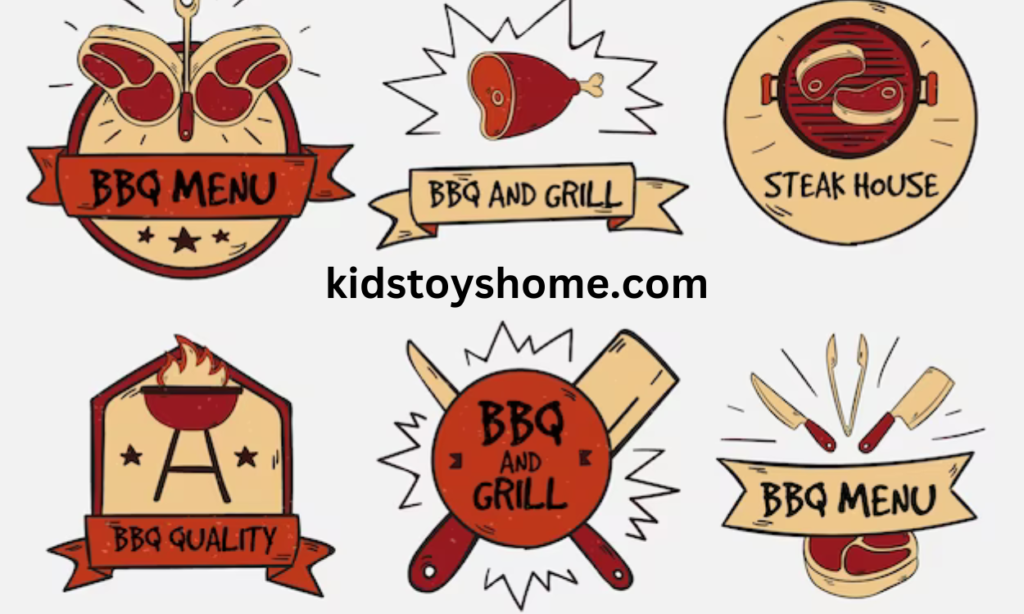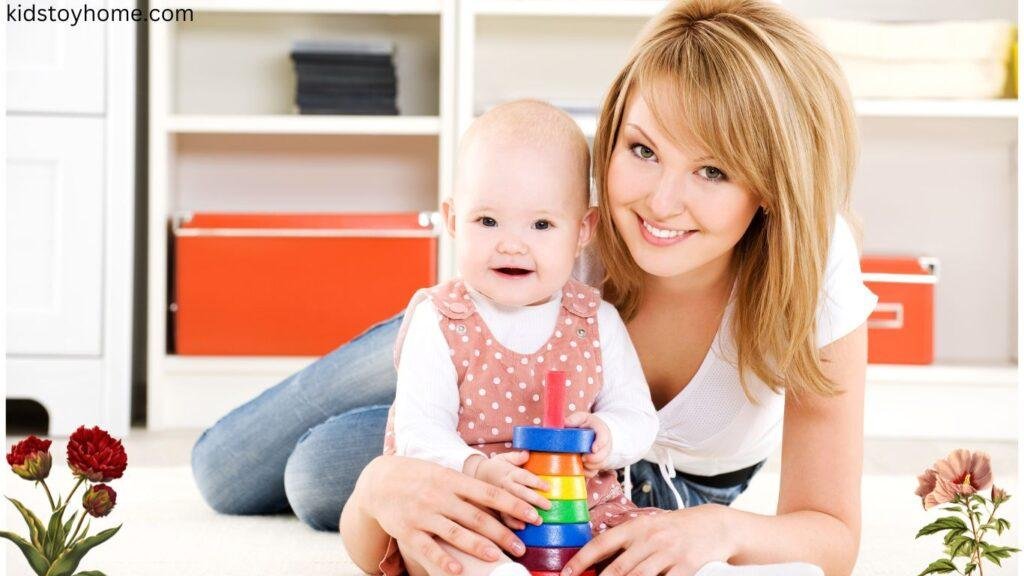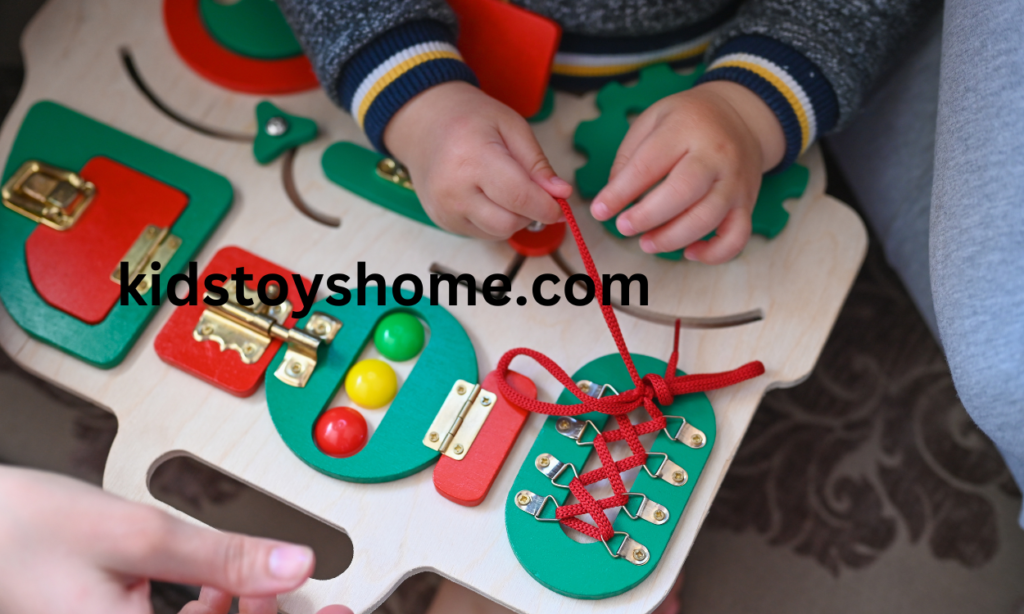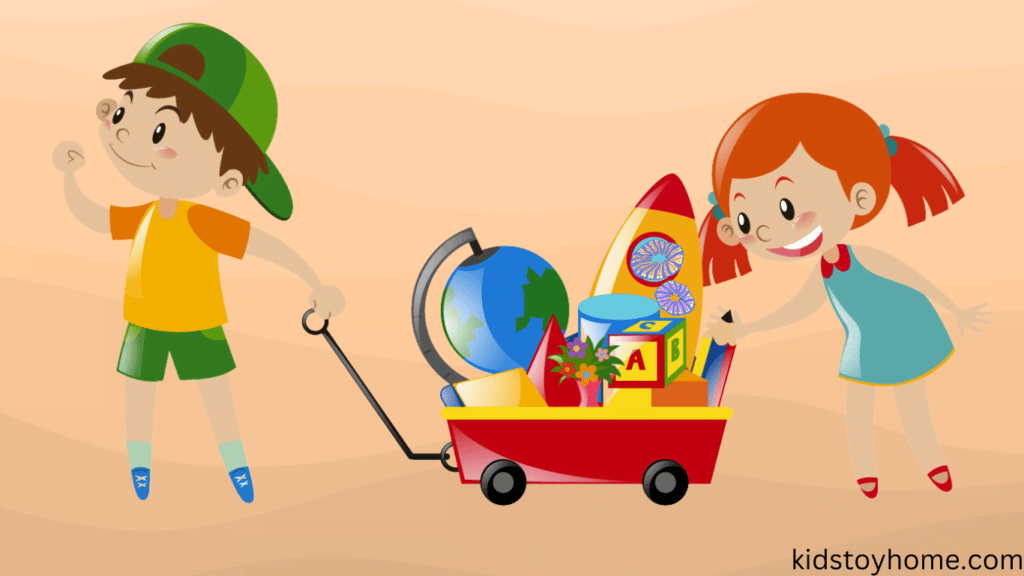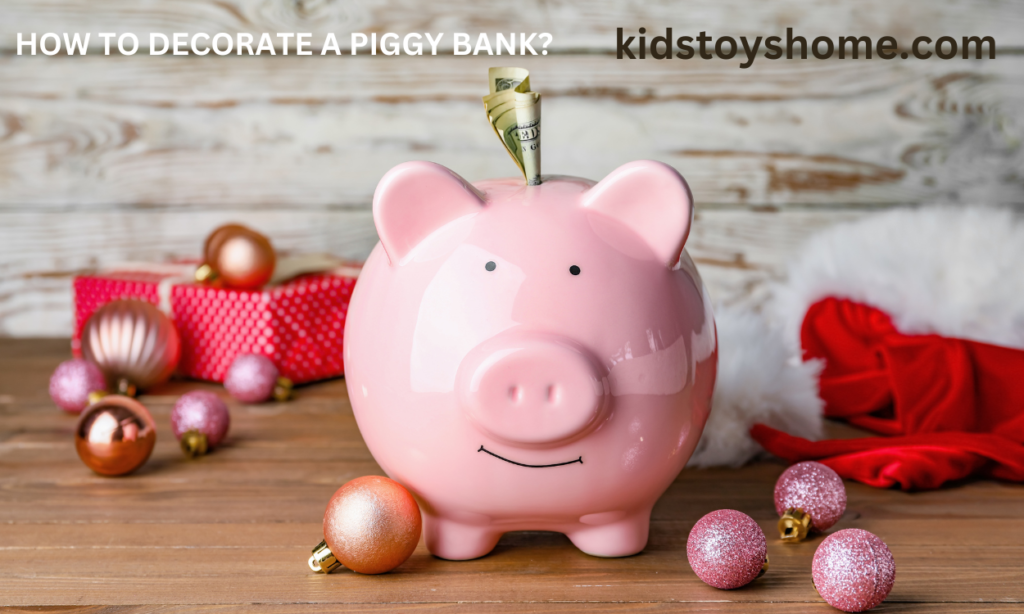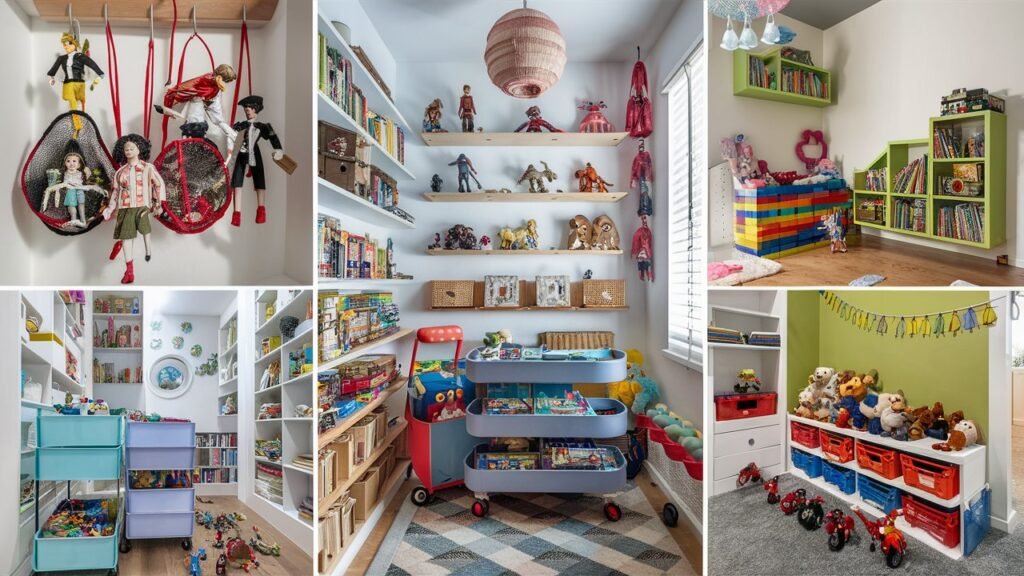
Toy storage in small spaces can be a significant challenge for many households. With limited room to work with, finding a place for every doll, block, and action figure can quickly become overwhelming. The mess can easily take over, leading to a cluttered and stressful living environment.
A well-organized approach to toy storage can make a world of difference. Smart and creative storage solutions, such as multi-purpose furniture and vertical storage systems, can help maximize space while keeping toys accessible and neatly arranged.
Keep reading to discover innovative ideas and product recommendations for effective toy storage in small spaces. Below, we discuss practical tips and strategies that will transform your space and bring order to the chaos.
How To Organize Toys In Small Spaces
Organizing toys in small spaces can be a challenging task, but with a bit of creativity and strategic planning, it is entirely achievable. Here are some tips to help you keep your children’s play area tidy and efficient:
Maximize Vertical Storage
Install shelves or wall-mounted bins on the given wall space. This keeps the floor clear and opens more storage without using valuable room. The space will maximize play while keeping your toys organized and accessible.
Multi-Functional Furniture
Use storage furniture like chairs with pockets or bed drawers. Then, the space will never again get out of hand and cluttered.
Clear Storage Bins and Label Everything
Organize the toys in clear storage bins for visual and easy access. Provide a label on each clear bin to guide a child on where to put everything back, making cleanup faster and teaching them organization skills.
Rotate Toys
Avoid toy overload by cycling the toys now and then. Set some aside, then substitute them periodically, usually every few weeks, so the play area stays engaging and de-cluttered.
Take Advantage of the Under-Bed Area
Use the space under the bed with rolling storage bins or low-profile containers. Keep them hidden from view but within reach when they’re needed.
Implement these strategies to create an organized, clutter-free toy storage system, making playtime easier and cleanup a breeze.
Importance of Organize Toy Storage in Small Spaces
Effective toy storage is crucial in small spaces to maintain order and maximize the limited area available. Proper organization ensures that toys are easily accessible, reduces clutter, and creates a more pleasant living environment. Utilizing vertical storage solutions, multifunctional furniture, and creative organizing techniques can help in keeping the space neat and efficient. Moreover, an organized play area fosters better play experiences and teaches children valuable lessons in responsibility and tidiness.
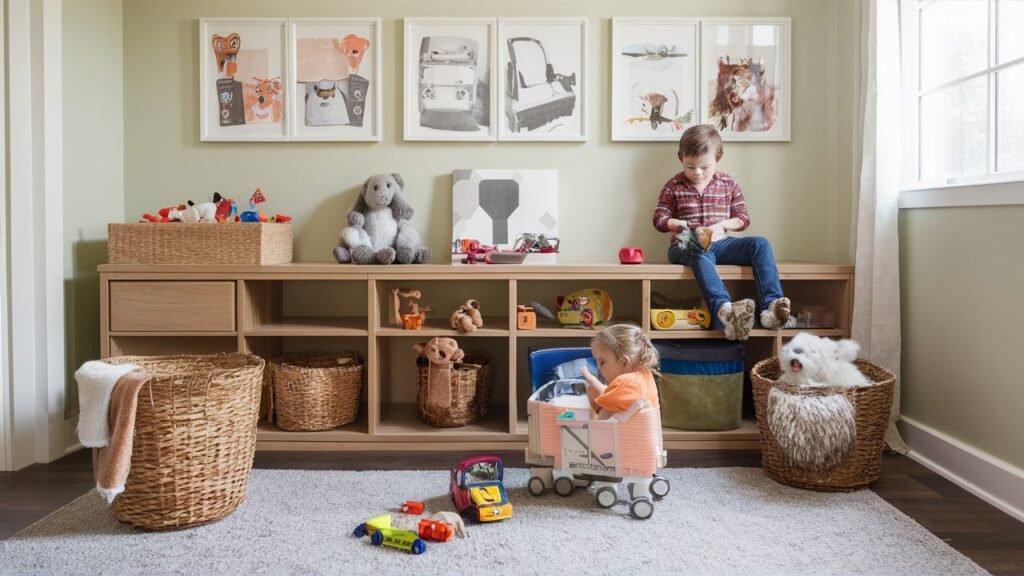
Assessing Your Space
To optimize toy storage in your small space, the first step is to thoroughly assess the location, size, and layout of the area. Start by identifying the primary location where the toys will be stored, whether it’s a dedicated playroom, a corner of the living room, or a child’s bedroom. Understanding the general location helps in choosing storage solutions that blend seamlessly with the surrounding decor and functionality.
Physically measure the dimensions of the space to get accurate readings of the width, length, and height. Use a tape measure to determine these dimensions, noting any existing furniture, windows, doors, or obstructions such as radiators and built-in shelves. This data will help in planning the layout effectively, ensuring that storage solutions fit comfortably within the available space without impeding movement.
It’s also important to evaluate the lighting and acoustics of the area. Consider the natural light sources and existing lighting fixtures, as adequate illumination is essential for both play and cleanup. Additionally, assess the acoustics to ensure the area is conducive to play, as poor acoustics can affect noise levels and overall comfort. By paying attention to these factors, you can create a well-organised, practical, and enjoyable space for both children and adults.
Available Space for Toy Storage
Living Room Corner
A corner of the living room provides a practical option for toy storage. This area typically offers moderate space and is often centrally located, making it easily accessible. However, limitations include potential clashes with existing furniture and the need to maintain aesthetic harmony with the rest of the room.
Child’s Bedroom
The child’s bedroom usually offers the most intuitive space for toy storage. With flexibility in using under-bed storage, closets, or dedicated toy chests, this area maximizes the use of available space. Potential restrictions may include limited floor space and the need to balance storage with sleeping and study areas.
Dedicated Playroom
A dedicated playroom is ideal for toy storage, providing ample room for various storage solutions like shelves, bins, and multi-functional furniture. The primary limitation in this space might be the necessity for frequent cleaning and organization to prevent the area from becoming too cluttered.
Importance of Evaluating the Space
Assessing the available space for toy storage is crucial before selecting storage solutions. A thorough evaluation helps to identify the dimensions, potential obstructions, and specific needs of the area, ensuring that the chosen storage options fit perfectly.
This step also highlights any limitations or restrictions, such as limited floor space or aesthetic constraints, allowing for more informed and effective decision-making. Proper evaluation ultimately contributes to creating a functional and organized environment that caters to both storage needs and everyday living activities.
Decluttering and Limiting the Number of Toys
Decluttering is a vital step in maintaining an organized and functional space, especially in small homes. Limiting the number of toys not only reduces clutter but also encourages children to value and take better care of the toys they have. A tidy environment promotes a sense of calm and makes it easier for children to engage in focused play. Additionally, a well-organised space minimizes the time spent on tidying up, allowing more opportunities for quality family time.
To begin the decluttering process, it’s crucial to go through all the toys in your home systematically. Start by sorting the toys into two main piles: one for keeping and another for donating, selling, or recycling. Select a time when the children are not around to avoid any emotional attachments influencing the process. This ensures that the task is efficient and objective.
In the “keeping” pile, include toys that are frequently used, in good condition, and hold sentimental value. The other pile should consist of toys that are no longer played with, duplicates, or those that are broken beyond repair. Toys in good condition can be donated to charities or sold, while broken ones should be recycled responsibly.
By focusing on decluttering and limiting the number of toys, you create a more organised living space that is easier to maintain, fostering a healthier and more enjoyable environment for the entire family.
Sorting Through Toys: A Detailed Guide
To effectively sort through toys and determine what to keep, donate, or discard, you need to start by conducting a comprehensive sweep of the entire house. This involves going through every room and gathering all random toys into one central location. This initial step ensures that no toys are overlooked and provides a clear picture of the total volume you are dealing with.
Determining What to Keep
Once all toys are collected, the next step is to categorise them. Create three primary piles: one for keeping, one for donating, and one for discarding. Begin the sorting process by evaluating each toy based on its condition, frequency of use, and sentimental value. Toys that are frequently played with, in good condition, and hold special meaning should be placed in the “keep” pile. This ensures that only the most valued and functional toys remain in your living space.
Donate or Discard
Toys that are no longer used, duplicates, or those that are broken should be assessed for potential donation or discarding. Toys are in good condition but can no longer be played with and can be donated to charities, schools, or community centres. This not only helps others but also reduces waste. Broken toys, on the other hand, should be responsibly discarded or recycled if possible, to minimize environmental impact.
Implementing a Toy Rotation System
A toy rotation system is an excellent way to keep the toy collection fresh and engaging for children without overwhelming them with too many options at once. After sorting through the toys, divide the “keep” pile into smaller groups. Only one group should be accessible for play at any given time while the others are stored away. Rotate the groups on a regular schedule—weekly or monthly—to keep the play experience varied and exciting.
Using Toy Bins to Organize Toys
To maintain the organization achieved through sorting, it’s crucial to implement a system for storing the toys that are kept. Toy bins are highly effective in managing and organizing toys, allowing for easy access and tidying. Label each bin according to toy type, such as “blocks,” “dolls,” or “vehicles,” and ensure that bins are easily accessible to children. This promotes independence and responsibility, as children can easily find and put away their toys.
By thoroughly sorting through toys to determine what to keep, donate, or discard, implementing a toy rotation system, and utilizing toy bins, you can achieve a well-organized and efficient toy storage solution. This approach not only maximizes your available space but also fosters a more enjoyable and manageable living environment for the entire family.
Creating a functional and aesthetically pleasing toy storage system requires thoughtful planning and consistent maintenance. In the following sections, we will explore various elements essential to achieving this goal, from utilizing vertical space to selecting the right storage furniture and ensuring safety. Each heading delves into specific strategies aimed at helping you make the most of your space while keeping the area tidy and accessible for children.
Utilizing Multi-Functional Furniture for Efficient Toy Storage
One effective strategy for maintaining a clutter-free and functional play area is incorporating multi-functional furniture with built-in storage. These pieces not only serve their primary purpose but also offer hidden compartments to neatly store toys, books, and other items. This dual functionality helps to keep the space organized, making it easier to maintain a tidy environment that fosters engagement and focus.
The Benefits of Multi-Functional Furniture
Furniture such as ottomans, benches, coffee tables, and end tables with built-in storage can significantly enhance toy storage solutions. An ottoman with a removable lid, for instance, can house numerous small toys while providing extra seating.
Benches with storage compartments underneath can serve as both a seating area and a hiding place for larger toys or scattered items. Coffee tables with drawers or lift-top surfaces can store books, puzzles, or board games discreetly. Similarly, end tables with hidden shelves or compartments offer convenient bedside storage, keeping frequently used items within reach yet out of sight.
Incorporating such multi-functional furniture pieces ensures that the living and play areas remain aesthetically pleasing and free of clutter. Moreover, children can easily access and put away their toys, promoting responsibility and independence.
Affordable Options for Multi-Functional Furniture
Achieving an organized play area with multi-functional furniture does not have to be expensive. Affordable options are available at discount shops, thrift stores, and consignment stores, which often carry quality pre-owned furniture at a fraction of the original cost.
Places like these can be treasure troves for finding ottomans, benches, coffee tables, and end tables with built-in storage. It’s essential to regularly check these sources, as inventory changes frequently, offering new possibilities for great deals.
By investing in multi-functional furniture with built-in storage, you can create a more orderly and practical play area that meets the needs of the entire family. This approach not only maximizes available space but also ensures that the environment remains welcoming and conducive to efficient play and daily activities.
Incorporating Storage Bins into Furniture Pieces
Dual-Purpose Furniture: Seating and Storage
Incorporating storage bins into furniture pieces like ottomans and benches is an innovative approach to making your living space both functional and stylish. These dual-purpose items not only provide ample storage space but also serve as practical seating or table options in your home. By integrating storage solutions into everyday furniture, you can maintain a tidy and organized environment without sacrificing comfort or usability.
The Versatility of Storage Ottomans
Storage ottomans are exceptionally versatile, making them a perfect family-friendly option for any household. These multifunctional pieces can hide toys, blankets, and other household items, keeping your space clutter-free. Additionally, storage ottomans can be used as extra seating when needed or even as a coffee table by adding a tray on top. Their ability to blend storage with functionality ensures that your living area remains both aesthetically pleasing and practical.
By choosing furniture pieces like ottomans and benches that incorporate storage bins, you effectively maximize your space and enhance the overall efficiency of your home. These dual-purpose items strike the perfect balance between storage and functionality, making them an ideal choice for families seeking to create an organized and welcoming living environment.
Choosing beds with built-in storage
When designing an optimal play area, it’s essential to explore diverse storage options that cater to the needs of both children and adults. From utilizing vertical space efficiently to ensuring the safety and aesthetic appeal of storage solutions, each aspect plays a crucial role in creating a well-organized and enjoyable environment. The following sections will delve into these strategies, offering practical advice and innovative ideas to achieve the perfect balance of function and form in toy storage.
Maximizing Wall Space for Effective Toy Storage
To optimize toy storage and maintain a tidy living area, maximizing wall space is crucial. The various ways to achieve this include installing wall shelving units, floating bookshelves, Montessori bookshelves, toy hammocks, and hanging basket bins. These solutions not only utilize vertical space efficiently but also enhance accessibility and organization.
- Wall Shelving Units: Installing wall shelving units is an excellent way to take advantage of unused vertical space. These units can be customized to fit the dimensions of your wall and can hold a variety of items, from toys to books and decorations. They help keep frequently used items within reach while freeing up floor space for play.
- Floating Bookshelves: Floating bookshelves offer a sleek and modern storage solution. These shelves attach directly to the wall without visible brackets, creating a clean and uncluttered look. Floating bookshelves are perfect for displaying children’s books, small toys, and decorative items, ensuring they are both visible and easily accessible.
- Montessori Bookshelves: Montessori bookshelves are designed with young children in mind. These low, forward-facing shelves allow kids to see the covers of books and select them independently. Installing Montessori bookshelves at a child’s eye level promotes engagement and fosters a love of reading while maintaining an organized space.
- Toy Hammocks: Toy hammocks are a fun and innovative way to store plush toys and stuffed animals. Mounted in the corner of the room, toy hammocks take advantage of high, often unused space and keep toys off the floor. This makes it easy for children to see and access their favorite stuffed animals while keeping the room tidy.
- Hanging Basket Bins: Hanging basket bins provide additional storage options for small toys, art supplies, or craft materials. These bins can be hung from hooks or rods mounted on the wall, making it easy to categorize and store various items. Hanging basket bins keep the floor clear and ensure that everything has a designated place.
Installing Wall Storage Solutions
Wall Shelving Units
When installing wall shelving units, first measure the space and decide on the number of shelves needed. Use a stud finder to locate the studs in the wall for secure mounting. Mark the positions and install sturdy brackets before attaching the shelves.
Floating Bookshelves
To install floating bookshelves, begin by determining the desired height and spacing between shelves. Use a level to ensure accuracy and mark the wall where the shelves will be mounted. Attach the mounting hardware according to the manufacturer’s instructions, ensuring it is secure before placing the shelves.
Montessori Bookshelves
Montessori bookshelves should be installed low on the wall so that they are within easy reach of children. Measure and mark the wall at the appropriate height, then securely attach the shelves using brackets or direct wall mounts. Ensure the shelves are stable and can hold the weight of multiple books.
Toy Hammocks
For toy hammocks, select an appropriate corner of the room and measure the space for the hammock. Ensure the wall can support the hammock’s weight when filled with toys. Install the hooks or anchors securely into the wall, following the manufacturer’s instructions, and hang the hammock.
Hanging Basket Bins
Hanging basket bins can be installed using hooks or rods. Measure the wall space and choose a height that is easily accessible. Secure the hooks or rod brackets to the wall, ensuring they can support the weight of filled baskets. Hang the baskets and categorize items for efficient storage.
By incorporating wall shelving units, floating bookshelves, Montessori bookshelves, toy hammocks, and hanging basket bins, you can effectively maximize wall space and create a more organized, functional, and aesthetically pleasing living environment. These storage solutions offer versatility and practicality, helping to keep the play area clutter-free and enjoyable for all family members.
Installing Shelves for Displaying and Organizing Toys
Shelves can be an excellent addition to any play area, allowing for the effective displaying and organizing of toys. When it comes to maximizing vertical space, installing shelves is a practical solution that keeps the playroom tidy and accessible. By utilizing the height of the walls, shelves provide ample storage without encroaching on valuable floor space, creating a more open and inviting environment for children to play.
One of the key benefits of installing shelves is the ability to provide easy access to toys. Open shelving allows children to see and reach their favourite toys without assistance, encouraging independence and self-directed play. This setup not only enhances accessibility but also helps in keeping the play area organized, as each toy has a designated place on the shelf.
Moreover, using shelves to separate toys by age can foster a more structured and educational play space. By organizing toys based on development stages, parents can ensure that age-appropriate items are within reach of children, promoting safe and suitable play experiences. Older children’s toys can be placed on higher shelves, while younger children’s items are stored on lower, easily accessible shelves. This method not only aids in organizing toys but also supports independent play and developmental growth.
In conclusion, installing shelves is a versatile and effective strategy for displaying and organizing toys. By maximizing vertical space, providing easy access, and separating toys by age, shelves can transform the playroom into a well-structured and enjoyable environment for children.
Using Pegboards or Hooks to Hang Toys
Pegboards and hooks offer a flexible and customizable storage solution for hanging toys. Pegboards, with their grid of holes, allows for endless configurations using hooks, bins, shelves, and baskets. This adaptability means you can tailor the storage system to fit the specific needs of your child’s toy collection. Pegboards are particularly useful for keeping smaller toys, craft supplies, and accessories organized and within reach. Moreover, they can be easily adjusted as your child’s interests and storage needs evolve.
To install a pegboard, first, select a suitable wall space and measure the area to ensure a good fit. Secure the pegboard to the wall using appropriate anchors and screws, ensuring it is firmly attached. Once installed, add various hooks and attachments to create a personalized storage layout. Hooks can hold items such as hanging puzzles, bags of building blocks, or even dress-up clothes. Bins and baskets attached to the pegboard can store smaller items like action figures, art supplies, or dolls.
Using hooks directly on the wall is another effective method to hang toys. Heavy-duty wall hooks can securely hold larger items like ride-on toys, backpacks, or sports equipment. Strategic placement of hooks at different heights allows children to access their toys easily, promoting independence and tidiness. Additionally, decorative hooks can add a fun element to the room’s aesthetic while maintaining functionality.
In conclusion, pegboards and hooks provide a versatile and efficient way to organize and display toys. By utilizing vertical space and customizing the storage setup, you can create an orderly and accessible play environment for your children. These solutions not only improve the overall organization but also encourage responsible toy management and independent play.
Utilizing Doors as Storage Space
Doors are often overlooked as potential storage space, yet they provide numerous opportunities for creating additional organization within your home. By incorporating a variety of door-mounted storage solutions, you can effectively utilize vertical space and keep frequently used items within easy reach, without adding clutter to floors or countertops.
Over-the-Door Organizers
One of the most versatile solutions for utilizing doors as storage space is the over-the-door organizer. These organizers typically feature multiple pockets or compartments and can be used to store anything from toys and craft supplies to toiletries and cleaning products. Simply hang the organizer over the top of the door, and you’ll instantly have additional storage without the need for any permanent installation. Over-the-door organizers are particularly useful in small spaces where every inch of storage counts.
Hanging Shoe Organizers
Hanging shoe organizers are another effective option for door-mounted storage. While originally designed for footwear, these organizers can be repurposed to hold a variety of small items. Each pocket can house toys, art supplies, toiletries, or even snacks. By hanging a shoe organizer on the back of a door, you create an orderly and easily accessible storage solution that keeps items organized and out of sight.
Magnetic Strips
Magnetic strips are a simple yet ingenious way to store small metal items on the back of a door. These strips can be affixed directly to the door and are perfect for holding items like toy cars, metal tools, or even kitchen utensils. They keep frequently used items visible and within easy reach while making efficient use of otherwise unused space.
Hooks and Racks
Installing hooks or racks on doors is another practical storage solution. Heavy-duty hooks can securely hold backpacks, jackets, hats, or sports equipment, making it ideal for entryways and children’s rooms. Racks with multiple hooks can offer even more storage potential, helping to keep floor space clear and organized. By strategically placing hooks at different heights, you can ensure that storage is accessible for all family members.
In conclusion, utilizing doors as storage space is an effective strategy for maximizing your home’s organizational potential. By employing options like over-the-door organizers, hanging shoe organizers, magnetic strips, and hooks or racks, you can create additional storage without sacrificing valuable floor space. These solutions are versatile, easy to install, and help maintain a clutter-free environment.
Benefits and Strategies for Utilizing Doors as Storage Space
Utilizing doors as storage space is a practical and efficient strategy for maximizing the organizational potential of your home. One of the main benefits of this approach is that it leverages vertical space, which is often underused, keeping essential items within easy reach without creating additional clutter on floors or countertops. Additionally, door-mounted storage solutions are typically easy to install and remove, making them perfect for renters or those who frequently rearrange their living spaces.
Over-the-Door Organizers
Over-the-door organizers are one of the most versatile storage solutions for doors. These organizers, which generally feature multiple pockets or compartments, can accommodate a wide range of items including toys, craft supplies, toiletries, and cleaning products. Simply hanging the organizer over the top of the door provides instant storage without the need for permanent installation. Such organizers are particularly beneficial in small spaces where every inch of storage counts, effectively turning otherwise wasted space into an organized, functional area.
Hanging Shoe Organizers
Originally designed for footwear, hanging shoe organizers can be repurposed to hold a variety of small items, making them an excellent door-mounted storage option. Each pocket of the shoe organizer can store toys, art supplies, toiletries, or snacks. By hanging a shoe organizer on the back of a door, you create an orderly, easily accessible storage solution that keeps items organized and out of sight. This method is especially useful for keeping small, loose items in order, reducing the chances of clutter and ensuring a tidy environment.
Magnetic Strips
Magnetic strips are a simple yet ingenious way to store small metal items on the back of a door. Affixed directly to the door, these strips are perfect for holding items like toy cars, metal tools, or kitchen utensils. Magnetic strips not only keep frequently used items visible and within easy reach but also make efficient use of otherwise unused vertical space. They can be particularly advantageous in workshops, play areas, or kitchens where metal items are frequently used but need to be kept organized.
Hooks and Racks
Installing hooks or racks on doors is another practical storage solution. Heavy-duty hooks are capable of securely holding larger items such as backpacks, jackets, hats, or sports equipment, making them ideal for entryways, mudrooms, and children’s rooms.
Multi-hook racks offer even more storage potential, helping to keep floor space clear and organized. By strategically placing hooks at different heights, you ensure that storage is accessible for all family members, including children. Hooks and racks not only enhance organization but also contribute to maintaining a clutter-free environment.
In conclusion, utilizing doors as storage space offers a versatile and effective strategy for enhancing home organization. Solutions such as over-the-door organizers, hanging shoe organizers, magnetic strips, and hooks or racks allow for the efficient use of vertical space while keeping essential items within easy reach and out of sight. These storage methods are easy to install, adaptable to various needs, and help maintain a tidy and orderly living environment.
30 Ways to Organize Toys in Small Spaces
Forward facing bookshelves
Forward-facing bookshelves enable the child to browse through and choose easily the books of his or her preference, promoting love for reading in a child and autonomy.
The shelves keep the books in tidy order, making it easy for a child to return each one to its proper place once it is done. Covers catch a child’s eye, encouraging children to look for a broader variety of genres and authors.
Forward-facing bookshelves are so practical; they also add beauty and character to the room; they blend in so well with the decor.
Since they have been mounted on the walls, they help in saving floor space, a factor that makes them suitable for use in small rooms while maximizing storage efficiency.
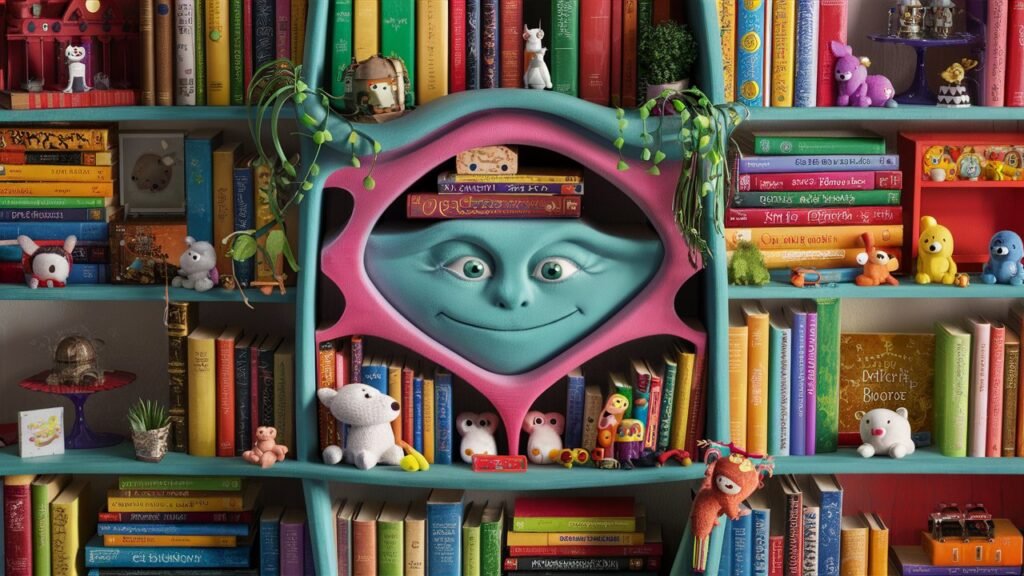
Easy Organization Project
Declutter the environment; clean up and remove everything you no longer want or use. Give those items away; recycle, or get rid of an item that is no longer in use so you can have a cleaner, functional environment.
Group similar items and label them so you can easily find them. These groups should be placed in storage bins or baskets to organize them and ensure anything from there at a minute’s notice.
Take advantage of the vertical spaces and free up much-needed floor space with shelves everywhere.
Create a simple routine whereby you return items to their proper places often. It will prevent clutter from accumulating again in the long term.
LEGO Storage Stool
- Invest in a LEGO Storage Stool: This multifunctional piece serves as both a comfortable stool and a storage solution for LEGO bricks.
- Compact Design: The stool’s compact design makes it perfect for small spaces, providing seating and storage without occupying too much room.
- Easy Access: The stool features an easy-to-lift lid, allowing quick and convenient access to stored LEGO pieces.
- Durable Material: Constructed from robust materials, the storage stool can withstand regular use by children.
- Organize by Color or Size: Use the internal compartments to sort LEGO bricks by color or size, simplifying the building process.
- Encourages Tidiness: Teaching children to store their LEGO bricks in the stool helps develop good organizational habits and keeps the play area clutter-free.

Flip Down Wall Art
- Space-Saving Design: Flip down wall art is an innovative solution for maximising floor space in smaller homes or apartments. By attaching art to the wall with a hinged mechanism, you can fold it down when needed and tuck it away when more space is required.
- Dual Functionality: Many flip down wall art pieces also serve a secondary function, often transforming into a desk, table, or additional seating. This versatility adds practicality to your decor without sacrificing aesthetics.
- Customisable Options: These pieces come in various designs, sizes, and styles, allowing you to customise your wall art to match the existing decor of your home. From minimalist frames to intricate works, the options are endless.
- Easy Installation: Most flip down wall art designs can be easily installed with basic tools, making them an accessible option for renters and homeowners alike. Clear instructions and mounting hardware are typically included.
- Enhanced Aesthetics: When folded up, the art adds a decorative touch to your walls. When folded down, it can serve as a conversation piece that also provides function, making it both a practical and beautiful addition to any room.

PVC Pipe Organization
- PVC Pipe Holder: Create a holder by attaching PVC pipes to a wall or workbench for storing tools like screwdrivers, pliers, or garden tools.
- Cable Management: Use smaller PVC pipe sections to manage and organize cables. Label each section for easy identification.
- Shoe Rack: Construct a shoe rack by stacking PVC pipes horizontally to store and organize shoes efficiently.
- Craft Supply Organizer: Cut PVC pipes into shorter lengths and mount them on a board to hold and organize pens, pencils, and other craft supplies.
- Garden Tool Storage: Set up vertical PVC pipes in a garage or shed to neatly store garden tools, keeping them upright and accessible.
- Toy Storage: Utilize PVC pipes to create bins or compartments for organizing children’s toys, ensuring that they are easily reachable and sorted.
- Under-Sink Storage: Implement PVC pipes under the sink to hold cleaning supplies, keeping them orderly and within easy reach.
- Sports Equipment Rack: Design a rack from PVC pipes to store sports equipment like bats, balls, and rackets, ensuring everything has its place.
- Garage Organization: Use varying lengths of PVC pipes mounted on walls for storing extension cords, hoses, and other long, flexible items.
Stuffed Animal Swing
- Soft and Cozy: The stuffed animal swing provides a comfortable and safe space for children to place their favourite plush toys.
- Fun Design: Featuring a playful and colourful design, it adds a whimsical touch to any room decor.
- Durable Material: Made from high-quality, durable materials to ensure longevity and stability.
- Bullets
- Enhances Room Decor: Adds an element of fun and creativity to children’s bedrooms or playrooms.
- Promotes Imaginative Play: Encourages children to engage in imaginative play and create stories with their stuffed animals.
- Easy to Install: Comes with clear instructions and all necessary hardware for a hassle-free installation.
- Safe and Secure: Designed with safety in mind, ensuring both the stuffed animals and the swing remain securely in place.
LEGO Storage Mat
- A practical solution for keeping play areas tidy, the LEGO storage mat doubles as a play surface and a storage bag. Spread out the mat for easy access to all pieces during playtime. When playtime is over, simply pull the drawstring to gather up the mat and neatly contain all the LEGO bricks. This ensures no stray pieces are left behind and reduces cleanup time significantly. Ideal for quick and convenient storage, making it a favorite among parents and children.
Pegboards To Hang Large Toys
- Allocate ample wall space for securely mounting the pegboard.
- Use heavy-duty hooks to hold the weight of larger toys.
- Arrange toys by size and type for easy access.
- Ensure pegs are appropriately spaced to prevent overlap.
- Regularly check that hooks and pegs remain stable under the weight of the toys.
- Customize pegboard colors and designs to match the room decor.
Maximize Wall Space
- Install floating shelves to display decorative items and books.
- Use wall-mounted storage solutions such as pegboards or grid systems to organize tools and accessories.
- Hang mirrors to create the illusion of more space and reflect light.
- Utilize vertical gardening by installing wall planters for indoor plants.
- Opt for multifunctional furniture like wall-mounted desks that can be folded when not in use.
- Add hooks and racks for hanging coats, hats, and bags.
- Consider custom-built cabinetry to optimize storage in tight spaces.
Closet Makeover
- Assess Your Needs: Before diving into the makeover, evaluate what you currently have and what you need. Consider the types of clothing, accessories, and shoes you regularly use and identify any items that require special storage solutions.
- Declutter: Remove everything from your closet and sort through each item. Donate or discard anything that no longer fits, is out of style, or hasn’t been worn in the past year. This step is crucial for making space for the essentials and organizing effectively.
- Categorize Group similar items together, such as jackets, shirts, pants, and dresses. This makes it easier to find what you need and maintain an organized space.
- Maximize Storage: Utilize all available space efficiently. Invest in solutions like shelves, bins, and hanging organizers to keep items neat and accessible.
- Seasonal Rotation: Store off-season clothing in separate bins or under-bed storage to free up closet space. Rotate items as the seasons change to keep your wardrobe relevant and easy to navigate.
- Maintain Order: Regularly check your closet to ensure it remains organized. Simple habits like putting items back in their designated spots and rearranging as needed will keep your closet functional and tidy.
Toy Organization Hack
- Use clear storage bins: Transparent bins allow you to see what’s inside without opening them, making it easy to find specific toys quickly.
- Label everything: Use labels to identify the contents of each bin or drawer. This makes it simple for kids to know where each toy belongs.
- Utilize vertical space: Install shelves or hanging organizers to store toys vertically, freeing up floor space and keeping the room tidy.
- Create designated zones: Designate specific areas for different types of toys, such as a corner for arts and crafts, a spot for building blocks, and a place for stuffed animals.
- Rotate toys: Keep a selection of toys in storage and rotate them periodically. This helps to reduce clutter and keeps children interested in their toys by offering variety.
- Use multi-functional furniture: Opt for furniture that doubles as storage, like benches or ottomans with hidden compartments, to maximize space.
How To Keep Your House Organized
- Declutter Regularly: Set aside time each week to go through your belongings and discard items you no longer need or use.
- Create Designated Spaces: Assign specific places for items like keys, mail, and remote controls to ensure they are always easy to find.
- Use Storage Solutions: Invest in organizers such as bins, baskets, and shelves to keep items tidy and maximize space.
- Label Everything: Use labels to mark storage areas, making it simple for everyone in the household to return items to their correct places.
- Implement a Cleaning Schedule: Develop and adhere to a cleaning routine to maintain order and cleanliness throughout the house.
- Limit Paper Accumulation: Go paperless where possible and manage mail and documents promptly to prevent piles from forming.
- Adopt the One-In-One-Out Rule: When you bring a new item into the house, make it a habit to remove an old one, keeping clutter at bay.
- Involve the Whole Family: Teach and encourage all household members to participate in keeping shared spaces organized.
Cover Cluttered Bookshelves
- Group similar items together to create an organized look.
- Use decorative storage boxes or bins to hide miscellaneous items.
- Remove any books or items that you no longer need or use.
- Adjust the height of shelves to accommodate books of different sizes.
- Incorporate bookends to keep books upright and tidy.
- Add decorative elements such as plants, photos, or artwork to break up the space.
- Keep frequently used items within easy reach for convenience.
- Regularly dust and clean the shelves to maintain their appearance.
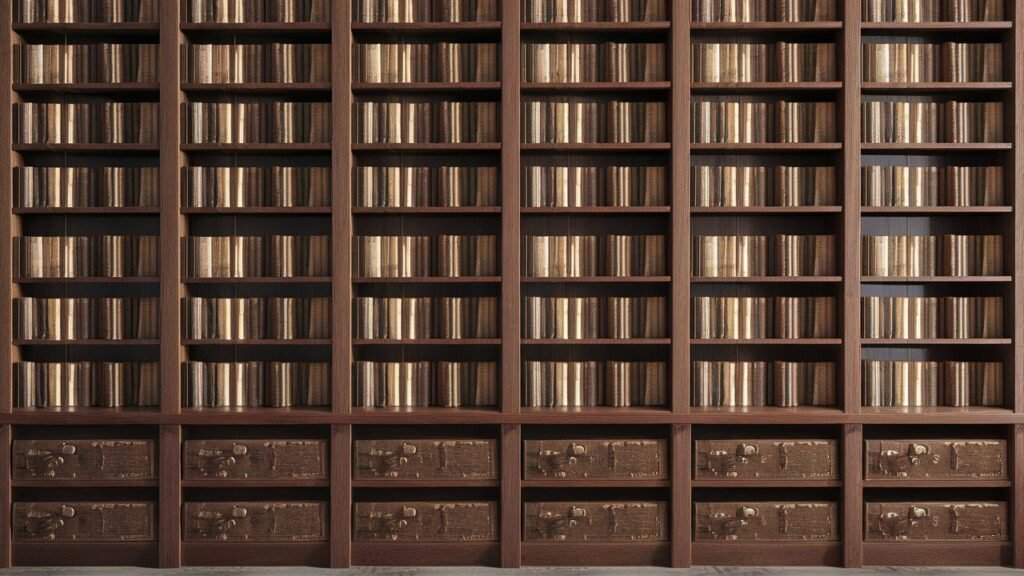
Photo Label Storage Boxes
- Labeled storage boxes neatly arranged on a shelf
- Different sizes and colors of boxes with clear labels
- Close-up of labels displaying contents of each box
- Storage boxes used to organize various household items
- Tidy and clutter-free space achieved through labeled storage boxes
Laundry Basket Storage
Using laundry baskets for storage is a simple yet effective way to keep your home organized. They can be used to store a variety of items, from clothes to toys, ensuring everything has a designated spot.
Treasure Organization
Creating a treasure organization system can be a fun activity for kids. Use small boxes or containers to store their cherished items, helping them learn the importance of keeping things organized.
Magnetic Strip Toy Car Organization
A magnetic strip is a perfect solution for organizing toy cars. Attach a strip to the wall at a low height, allowing children to easily attach and remove their cars, keeping them off the floor and neatly aligned.
Towel Rack Craft Organizer
Repurpose a towel rack as a craft organizer by using S-hooks or small baskets to hold supplies such as scissors, markers, and paints. This keeps crafting essentials within easy reach and organized.
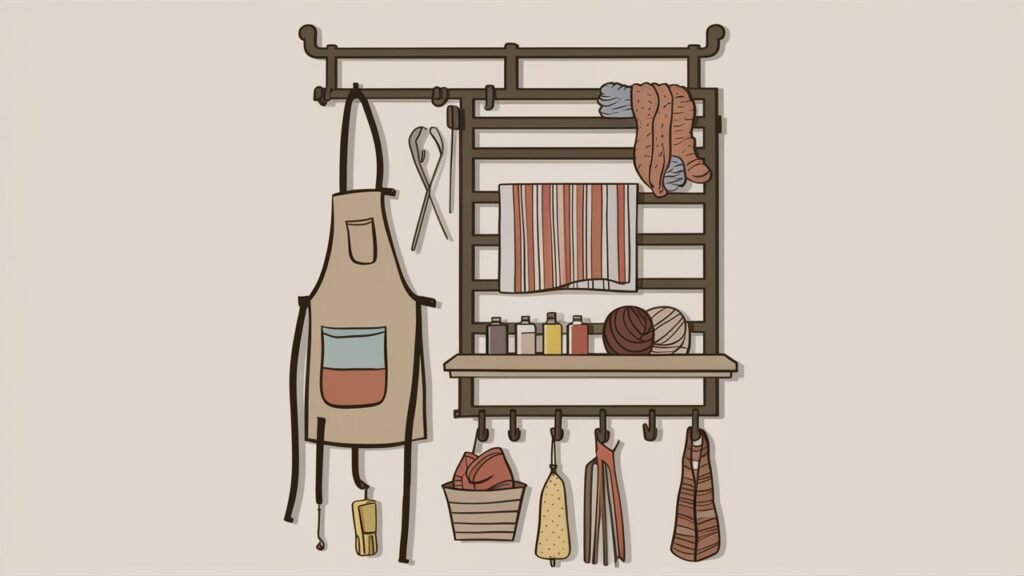
Under The Bed Organization
Under the bed storage is a great way to utilize unused space. Use shallow bins or bags to store seasonal clothing, shoes, or extra linens, making them easily accessible while keeping them out of sight.
Shoe Storage
Avoid clutter by implementing a structured shoe storage solution. Consider using a shoe rack, hanging organizer, or dedicated shoe shelf to keep footwear orderly and easily accessible.
Bag Storage
Hang your bags using hooks or a dedicated bag organizer. This prevents piles of bags from accumulating and ensures each bag has its own space, making it easier to find what you need.
Bench Seating
Adding a storage bench to your home provides both seating and a place to stow away items like blankets, shoes, or toys. This dual-purpose furniture is ideal for entryways or bedrooms.
Stuffed Animal Cage
Contain stuffed animals by creating a stuffed animal cage. Use bungee cords or wood slats around a frame to make it easy for kids to access their toys while keeping them contained and tidy.
Using A Bookshelf
A bookshelf is not just for books; it can also be an effective organization tool. Use baskets or bins on the shelves to store various items, from office supplies to kid’s toys, keeping them organized and easy to find.
Crate Seating And Storage
Crate seating provides a versatile solution for both seating and storage. Turn sturdy crates into seats with cushions on top, while using the interior of the crates to store books, toys, or craft supplies.
Bookcase Wall Display
Transform a bookcase into a wall display by organizing books and decorative items in an aesthetically pleasing manner. Group items by color, size, or theme to create a visually appealing display that also keeps items organized.
Repurposed Flower Planters
Repurpose flower planters as an organization tool for household items. Planters can be used to hold kitchen utensils, art supplies, or even bathroom toiletries, offering a creative and functional storage solution.
Kid Tested Ideas To Organize
Kid-tested organizational ideas ensure that the solutions implemented are practical and easy for children to use. Involve kids in the process of creating systems that they can maintain, leading to less clutter and more efficiency in keeping their spaces tidy.
Amazing Declutter Course
Enroll in an amazing decluttering course to learn effective strategies for organizing your home. A structured course can provide step-by-step instructions and motivational tips, making the decluttering process both manageable and rewarding.
Conclusion
Incorporating these 30 innovative ways to organize toys in small spaces can transform your home into a clutter-free and more enjoyable environment.
You can maximize every square inch of available space by utilizing vertical storage, multifunctional furniture, and creative categorization techniques. Not only will these methods help keep toys neatly arranged, but they will also make it easier for children to find and tidy up their playthings.
Embracing these organization strategies ensures a more orderly and stress-free living space, allowing for greater focus on quality family time and activities.
FAQs
How do you store a lot of toys in a small space?
Storing a large number of toys in a small space can be a challenging task, but with a few creative strategies, it is entirely manageable. One effective approach is to use vertical storage solutions, such as wall-mounted shelves or hanging organizers, which maximize the use of available height without consuming precious floor space.
What can I use instead of a toy box?
If you’re looking for creative alternatives to a traditional toy box, there are several options to consider. Open shelving units allow for easy access and can be a stylish addition to any room, doubling as both storage and display. Baskets or bins, especially those made from natural materials like wicker or fabric, can be placed around the home and provide a portable solution for collecting toys.
Storage benches or ottomans offer a dual-purpose approach by providing seating and hidden storage. For those with limited space, under-bed storage containers can be a practical choice, using otherwise unused space. Additionally, wall-mounted storage solutions like pegboards or hanging baskets keep toys off the floor and within reach, promoting better organization and tidiness.
How do you store kids’ toys neatly?
Storing kids’ toys neatly can often be a challenge, but with a few practical strategies, it can become manageable and even fun. Investing in storage bins and baskets is a great way to keep toys organized.
Label these containers with pictures or words to indicate what belongs inside, making it easier for kids to learn and maintain their storage habits. Consider utilizing vertical space; shelves and wall-mounted organizers can save floor space and keep toys within reach.
Rotating toys is another effective method; by only having a certain number of toys available at one time, it reduces clutter and keeps children engaged with their playthings. Involve the kids in the cleanup process, turning it into a game or a part of their daily routine, which helps them learn responsibility and keeps their play area tidy.
